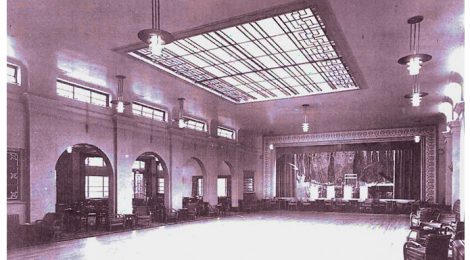
Shirley Lido – nr Solihull 1936. A short life of two years
Shirley Lido above showing the magnificent ballroom
Shirley Lido opening was due on June 6th 1936. It had been delayed a week.
Damage was caused by violent storms.
Shirley Lido Solihull was a surprise lido, situated in Sansome Road/off Haslucks Green Road near Shirley Station. The Lido was discovered by accident, on a “walk about” in Shirley. The Lido had a very short life of only 2 years.
This made it necessary to postpone the elaborate opening planned, which took place instead on June 13th 1936. The Architect was Herbert Arnold of West Bromwich, and the pool was 100ft by 40 ft holding 72 gallons of water heated to 70 degrees F (21 degrees C). It was chlorinated and changed continuously.
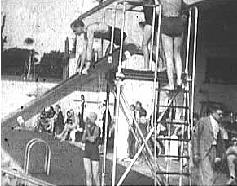
Diving Boards Shirley Lido
Decoration included white glazed tiles showing blue racing lanes and had non-slip kerbs, diving boards and springboards, chutes and changing rooms.
A sister pool is here – a fabulous oval shape in West Heath, aptly called The Bath Tub. Sadly it’s life too was also short
The pool was a little paradise, including a tea terrace (with Harry Pell’s Orchestra in attendance every day except Sunday), a childrens’s paddling pool, attractive gardens and a magnificent BALLROOM which accomodated 250 couples.
There was a Soda Fountain and separate lounges and buffet.
In the Lido’s heyday, it was surrounded by countryside, when Hasluck’s Green Road was a mere country lane or equivalent 0f a “B” road. Sansome Road or Rise wasn’t built then.
OUTCOME: The Lido had a very short life.
It closed 1939 and was used by the local civil defence services during the Second World War. It subsequently became the headquarters of Simmons & Sons Ltd, paper and packaging merchants.
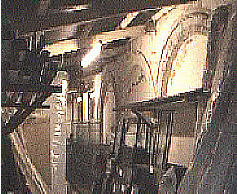
The original arches taken in 2007 when the lido site was used as a printing press works
2012 – still called “Lido House” today, the building lies along Samsome Road. Now a Windows & Manufacturing Company.
Contribution received from Steve Beauchampe 28/07/16
Shirley (Sports) Lido and Swimming Pool
“Architect Herbert Arnold, West Bromwich. Opened June 13th 1936 (had been delayed one week owing to violent storms), closed in 1939, had adjacent ballroom (opened October 10th 1936). Pool was 100ft x 40ft; 4ft-9ft. Held 72,000 gallons maintained at 70F and decorated with white glazed tiles showing blue racing lines and with non-slip kerbs, diving and spring boards, chutes and changing rooms. Pool had underwater illumination as well as floodlighting, with the water changed and purified by chlorination every six hours. Bathing cubicles were bright and roomy, each with a cardboard box to store bathers’ clothes. Box then given to attendant with bather then given a numbered tally to wear around their wrist. There was a paddling pool at shallow end with a water cascade, the paddle and boating pools adapted from a natural pool. Health and Fitness classes were held alongside the pool. Facility included a tea terrace (with Harry Pell’s Orchestra in attendance every day except Sunday), attractive gardens and Shirley Lido Ballroom, which accommodated 500. There was a soda fountain (or aerator) and separate lounges and buffet. Tea dances were held every Wednesday and Saturday, with Hall Green Dancing Club on Thursdays, which was club night. Facility advertised as ‘One minute from Shirley Station GWR’, and there was a large, free car park. Entrance to Lido was in Burman Road. An elaborate opening ceremony had been planned for June 6th but a storm damaged surrounding properties, causing a postponement. No such ceremony was held on the 13th but ‘one of some interest may follow when everything is open’. Lido opened by 11-year old Ruth Wilkes who swam the first length, and was presented with a basket of fruit. Also present were Stainless Stephen, the famous radio and variety artist. The Directors (who included David F. Wiseman, a director of Birmingham Football Club) hoped that the facility would be a sports centre in every sense of the word and it was expected that swimming galas and events of considerable importance and interest would take place at the Lido.
Houses cover the surrounding area. Following closure, the facility was used by local civil defence services during World War II and subsequently became headquarters of Simmons and Sons Ltd, paper and packaging merchants. Lido buildings are still intact though the pool is now covered and used as factory space. It still slopes for shallow/deep end.”
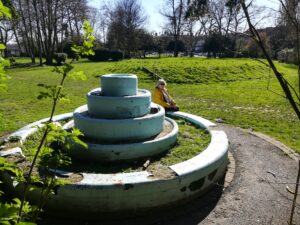
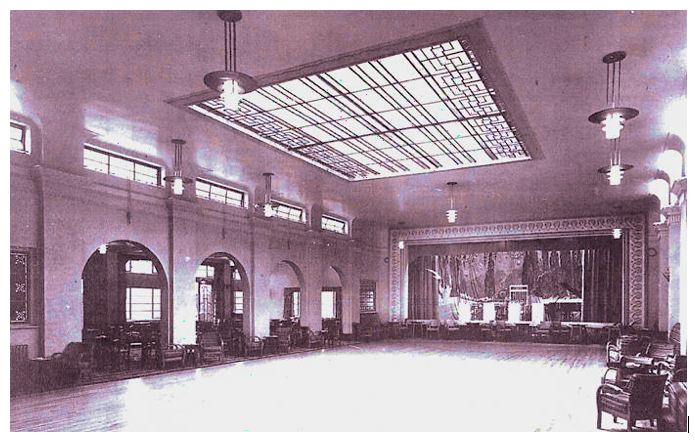




Why did the Lido close. I lived in Burman road.